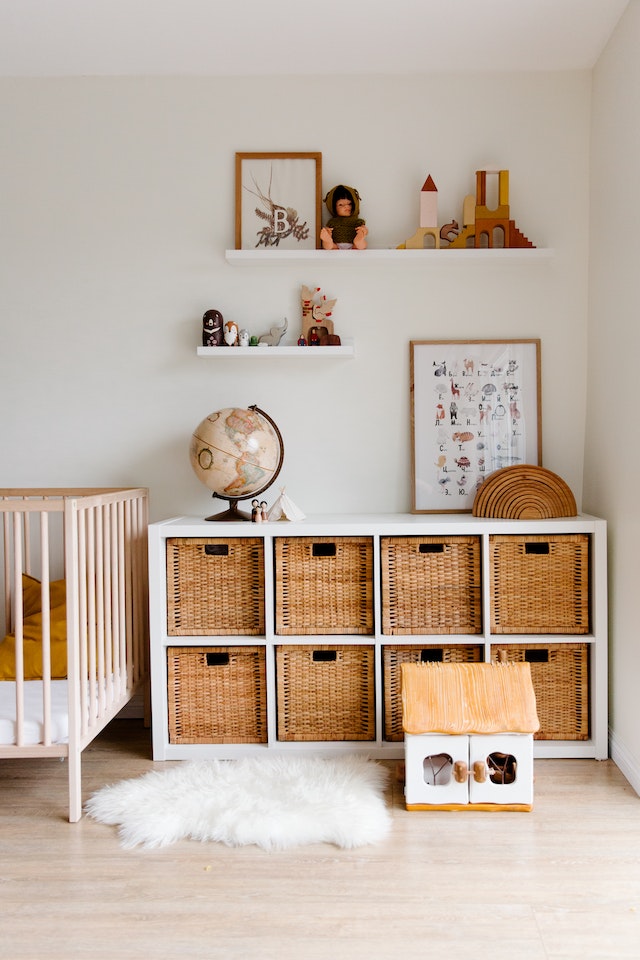
Being a single mom is hard enough, but running a small business on top of that can seem like an impossible feat. However, taking your small business online can make things easier for you and provide much-needed benefits. Here are tips to help you get started:
Define Your Niche
The first step to taking your small business online is to define your niche. What are you passionate about? What do you have experience in? What would you like to learn more about? Once you understand what it is you want to offer, you can start to build your website and market your products or services more effectively.
Research Your Competition
Next, you’ll need to research your competition. Check out their websites and social media accounts to see what they’re doing right and what they’re doing wrong. Then, take what you’ve learned and create a website and marketing strategy to set you apart.
Here are a few things to keep in mind when researching your competition:
-What kind of products or services are they offering?
-How does their pricing compare to your own?
-What is their website design like? Is it user-friendly?
-What social media platforms are they active on, and how often do they post?
-What kind of content do they share? Is it engaging, informative, or both?
Once you have a good understanding of your competition, you can start to create a website and marketing strategy that will help you get ahead.
Create a Professional Website
Your website is often the first impression potential customers will have of your business, so it’s essential to make sure it looks professional and trustworthy. Use high-quality images, easy-to-navigate menus, and well-written content to give visitors the best possible experience. You may also want to consider hiring a web designer if you don’t feel confident in your ability to create a beautiful website on your own.
Make sure your website is mobile-friendly since more people are using their smartphones and tablets to browse the internet. Mobile-friendly websites are easy to read and navigate on small screens, so potential customers won’t get frustrated and click away. In addition, you can use Google’s free Mobile-Friendly Test tool to see if your website passes muster.
Get Listed in Online Directories
In addition to your website, there are other ways to get your business online and in front of potential customers. One way is to list your business in online directories like Google My Business, Yelp, and Foursquare. These free listings can help improve your visibility in search engine results.
To get started, create a profile for your business on each site and include as much information as possible, such as your hours of operation, address, and contact information. You should also add photos and videos to help potential customers learn more about your business. In addition, take advantage of any opportunities to add special offers or deals to your listings.
Use Social Media Wisely
Social media can be a great way to promote your small business online, but it’s essential to use it wisely. Post engaging content regularly, but don’t overcrowd people’s feeds with ads for your products or services. Instead, focus on building relationships and providing value so that people will want to buy from you when they’re ready.
And, of course, include links to your website and online store so that people can easily find you. You can also use hashtags to reach a broader audience on sites like Twitter and Instagram.
Invest in Paid Advertising
Don’t be afraid to invest in paid advertising such as Google AdWords or Facebook Ads. While organic reach is great, sometimes you need a little boost to get in front of potential customers who are looking for what you have to offer. Just be sure to track your results to know which ads are performing well and adjust accordingly.
Build Relationships With Customers
One way to make your small business stand out is to add live online chat software to your website. This will allow potential and current customers to chat with you in real time, which can help build trust and relationships.
You can also use chat software to upsell products and services and provide customer support.
Another way to build customer relationships is to offer incentives for them to shop with you. This could include discounts, free shipping, or loyalty rewards. You can also create a VIP program for your best customers. By showing your customers that you value their business, you’ll be more likely to build long-lasting relationships.

Use Blog Posts To Create Traffic To Your Website
As a business owner, you understand the importance of traffic to your website. You also understand that, as a single mom, time is precious. So how do you increase traffic without sacrificing time with your kids? The answer is blog posts.
By writing blog posts related to your business, you can attract new visitors to your website who may not have found you otherwise. Plus, blogging is a great way to show potential customers your expertise in your industry.
Not sure where to start? Here are some tips:
- Brainstorm topics that would be of interest to your target audience.
- Write catchy headlines that make people want to click through to your blog post.
- Write engaging and informative content that will keep people reading.
- Use images, infographics, and videos to break up your text and add visual interest.
- Include calls to action at the end of your blog post to encourage people to visit your website or sign up for your newsletter.
By following these tips, you can start generating traffic to your website through blog posts – without sacrificing time with your kids.
Use SEO To Ensure Your Website Is Seen By Potential Customers
SEO, or search engine optimization, is a technique that helps improve the visibility of a website in search engine results pages (SERPs). By optimizing the website for relevant keywords and phrases, businesses can attract more visitors to their site and generate more leads and sales.
As a single mom, you may not have the time or resources to invest in a full-scale SEO campaign. However, you can do some simple things to improve your website’s visibility and attract more traffic.
Make sure your website is updated regularly with fresh content.
Search engines love websites that are constantly updated with new content. If your website hasn’t been updated in a while, it’s not being crawled by search engines as often as it should be.
Fresh content can be blog posts, articles, new product descriptions, or even simple information about your business. Whatever you choose to add, ensure it is well-written and relevant to your target audience.
Use relevant keywords and phrases on your website.
When people search for businesses like yours online, they typically use keywords or phrases that describe what they are looking for. For example, someone searching for a local bakery may use the keyword “bakery” or “cake shop.”

Pay Attention To Detail
You’re a busy mom, and letting little things fall through the cracks is easy. But when you’re running a business, even the most minor details matter. Paying attention to detail can help you avoid mistakes, keep your customers happy, and make your business run more smoothly.
Small details like packaging, labeling, and invoicing can make a big impression on customers. If your packaging is sloppy or your labels are incorrect labels, it’ll reflect poorly on your business. And if you make mistakes on customer invoices, they may not be inclined to do business with you again. So take the time to double-check your work and ensure everything is perfect.
It’s also essential to be detail-oriented when communicating with customers. Respond promptly to their emails and phone calls, and ensure you understand their needs before promising anything. If you take the time to listen to your customers and give them the individual attention they deserve, they’ll appreciate it–and they’re more likely to keep doing business with you.
Take An Online Business Course
One of the best ways to learn how to take your small business online as a single mom is to take an online business course. This can help you learn about all the different aspects of running an online business, from building a website to marketing your products or services. There are plenty of courses available online, so you should be able to find one that fits your budget and schedule.
Learn From Fellow Business Women
If you want to learn how to take your business online as a single mom, there’s no better way than to learn from those who have already done it. So look for podcasts or interviews with women business owners who have successfully moved their businesses online. Not only will you glean some great tips and advice, but you’ll also get inspired by their stories.
There are also plenty of Facebook groups and forums dedicated to women entrepreneurs. These can be excellent resources for asking questions, getting advice, and connecting with other like-minded business owners.
Several podcasts can help you with this research, such as The Momtrepreneur Podcast and The Boss Babe Podcast. Both podcasts feature interviews with successful female entrepreneurs who share their stories and advice.
There are many benefits of taking your small business online as a single mom—including more flexibility, increased exposure, and the ability to reach a wider audience. While it takes effort to get started, the rewards are well worth it! So follow the tips above to begin taking your small business online today!














